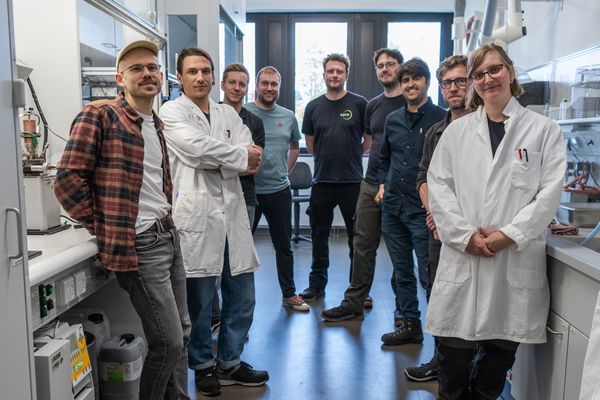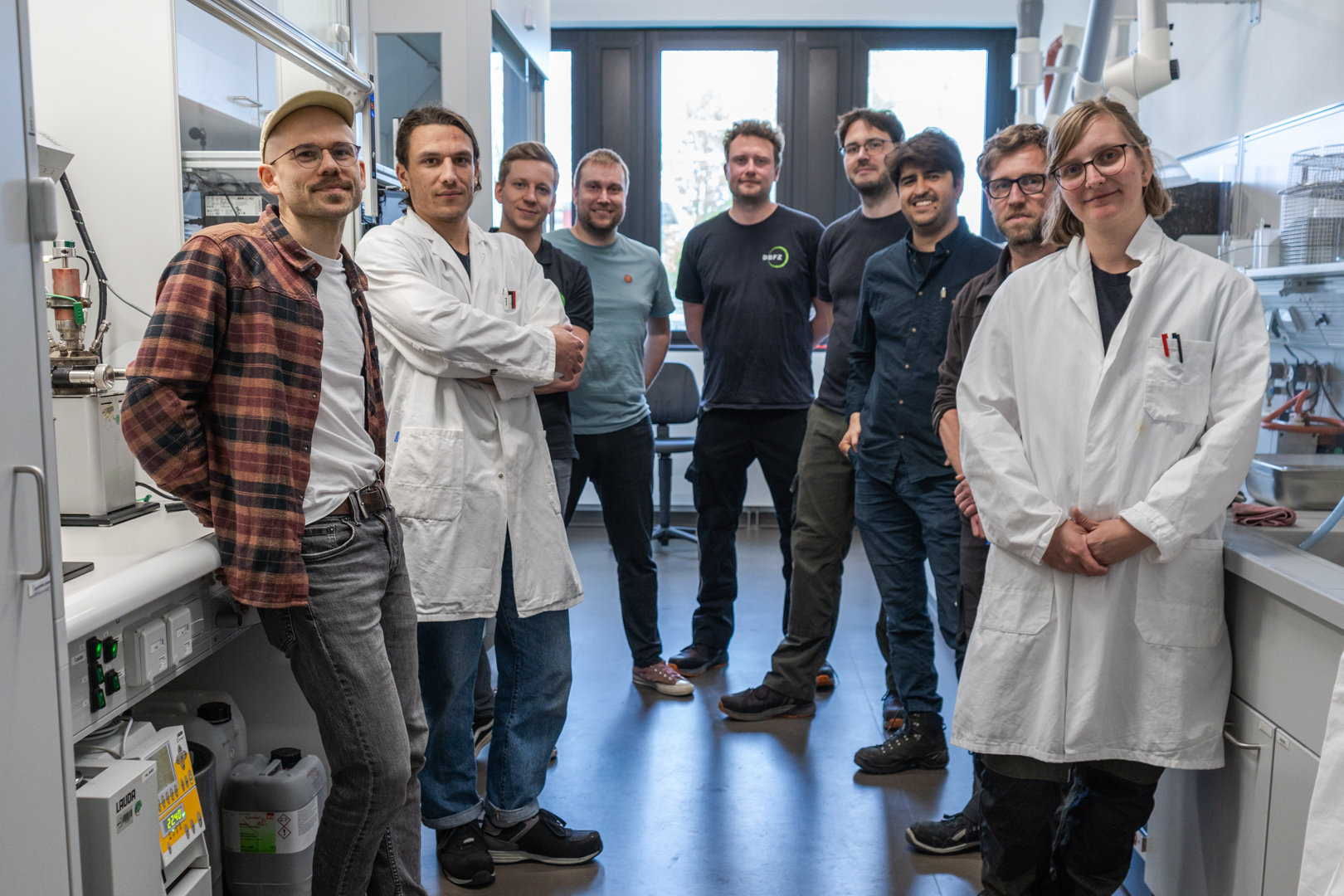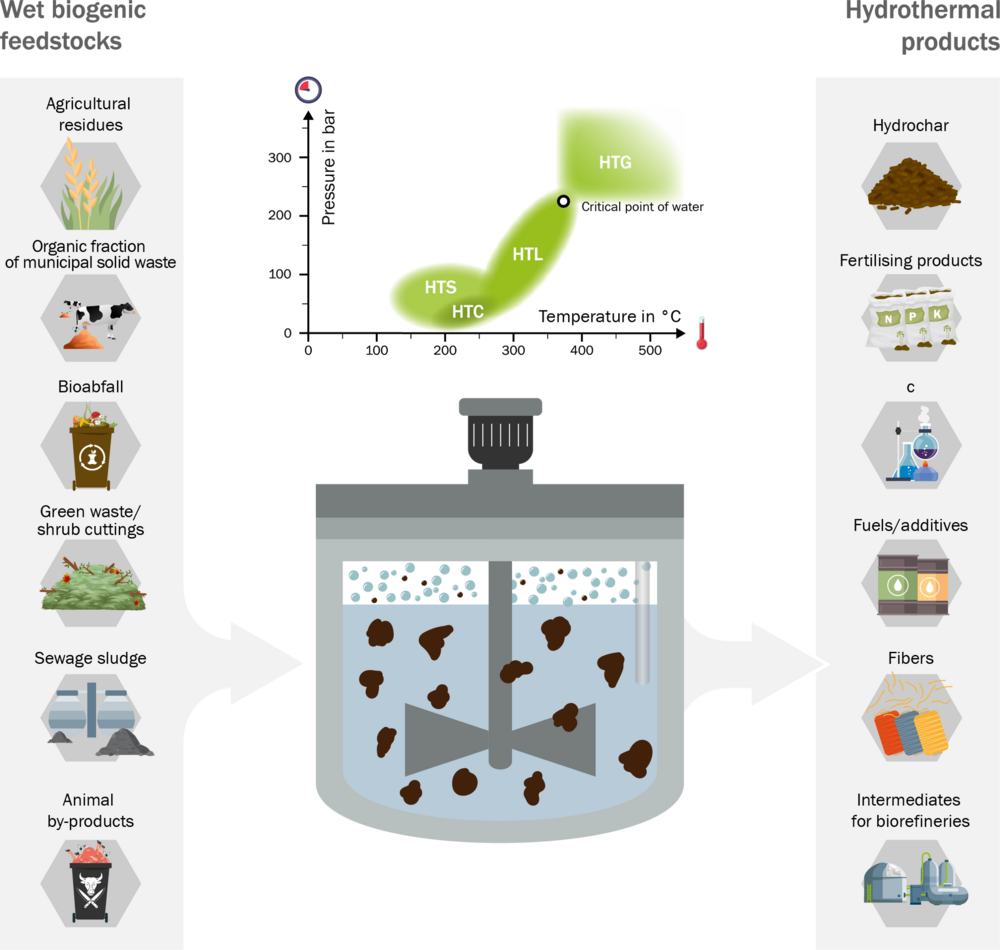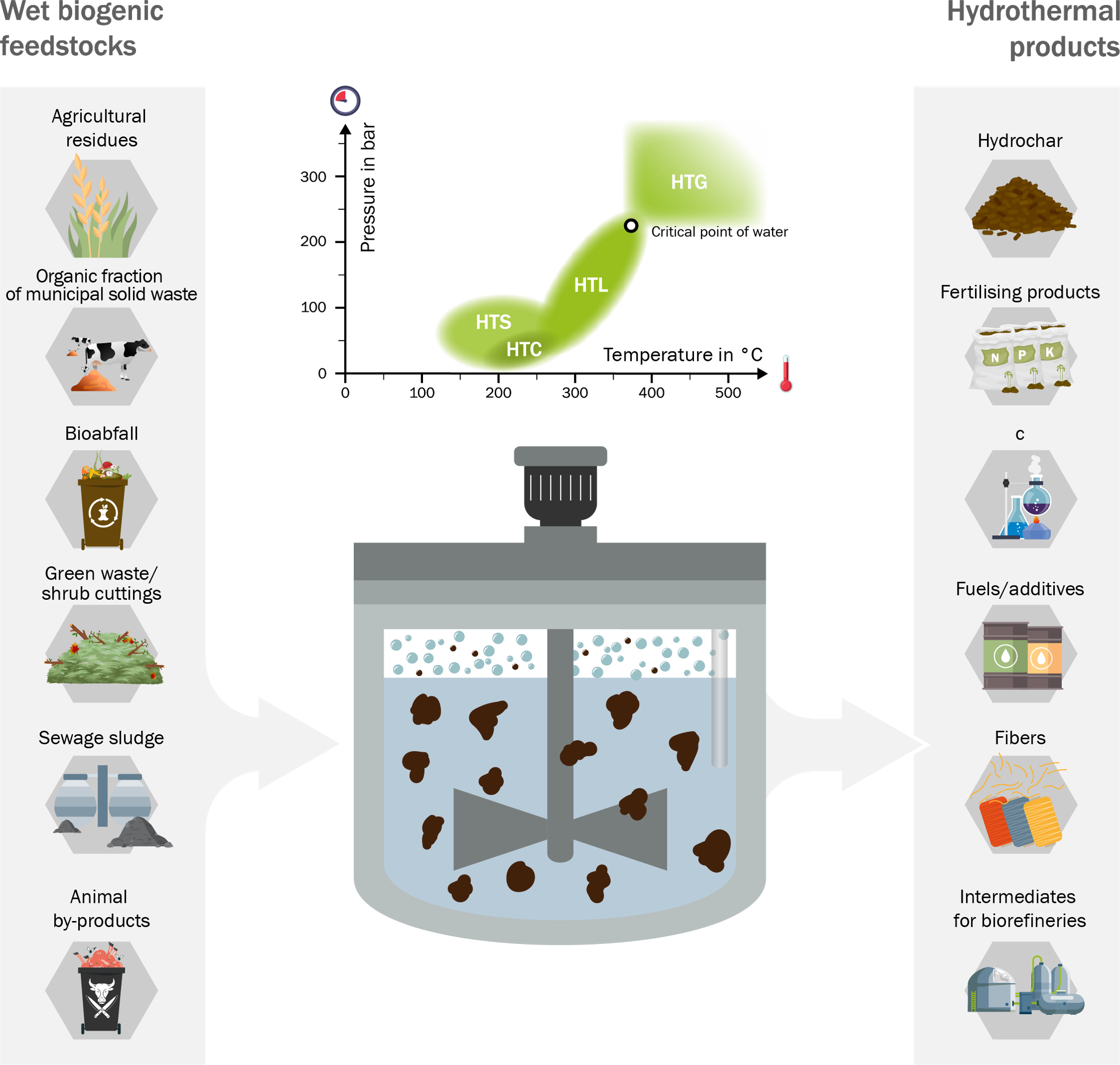The Working Group
In close synergy with the research questions surrounding gasification processes, fuel components and the associated up- and downstream processing, this R&D focus area focuses on hydrothermal processes as a building block of biorefinery approaches and is subject of theoretical and experimental investigations.
Focus topics of the working group:
- Investigation of processes and technologies for hydrothermal biomass conversion, i.e., hydrothermal carbonisation (HTC) and hydrothermal liquefaction (HTL)
- Biomass pretreatment under mild hydrothermal conditions for subsequent processes
- Hydrothermal processes as a possibility for nutrient recovery from biogenic residues such as sewage sludge, digestate, etc.
- Hydrothermally produced chars used as fuels, adsorbents or in soil
- Production of chemicals and fuel precursors using hydrothermal processes
The Team
We are an interdisciplinary team of scientists and technicians and are always looking for interested partners. Just contact us!
Hydrothermal Processes
Hydrothermal processes (HTP) are technologies for refining biomass and residues. Using HTP, biomass with a high water content and biogenic residues can be converted into solid, liquid or gaseous carbon carriers under increased pressure and temperature. The most important ingredient for this is liquid water or steam. HTPs are the subject of current investigations, particularly for the refinement of biomass and as an innovative way of disposing of moist biogenic residues. They thus make a sustainable contribution to resource conservation and are an essential building block of the bioeconomy.
Since different products are formed with increasing temperatures and pressures, a distinction is made in hydrothermal processes between hydrothermal carbonisation (HTC), hydrothermal liquefaction (HTL) and hydrothermal gasification (HTG). Particularly mild hydrothermal processes with the aim of producing chemicals are grouped under the term hydrothermal synthesis (HTS).
Work at DBFZ focuses mainly on carbonisation, liquefaction and synthesis. Through the use of numerous experimental set-ups, a large number of research projects have already been successfully completed. The expertise acquired at DBFZ is based primarily on the use of biogenic residues.
Hydrothermal Synthesis (HTS)
During hydrothermal processes, biobased basic chemicals are also produced in the process water. Through targeted process control, such important compounds as 5-hydroxymethylfurfural (HMF), furfural and levulinic acid can be obtained. These are suitable, for example, for the production of plastics or serve as fuel precursors or additives and can replace fossil products. Process waters without significant concentrations of specific chemical compounds can furthermore be used for biogas production.
Hydrothermal Carbonisation (HTC)
Hydrothermal carbonisation (HTC) converts moist biogenic residues into so-called hydrochar. The process uses the changed properties of liquid water at elevated temperatures (180–280 °C) and increased pressure (10–65 bar). In addition to being a solvent, water also acts as a reaction partner and heat transfer medium.
Biomass is rich in chemically bound oxygen. During HTC, so-called dehydration reactions take place in which the chemically bound oxygen is split off in the form of water. What remains is the carbon that is also contained in the biomass, but in a significantly higher concentration.
The resulting hydrochar can be used for a variety of applications. In addition to energy use (combustion or gasification), it can also be used as a material, e.g., as activated carbon or soil additive. In the utilisation of nutrient-rich biogenic residues such as sewage sludge or liquid manure, the HTC process also enables the recovery of valuable nutrients such as nitrogen and phosphorus. Sewage sludge and animal manure are the largest domestic source of phosphorus for agriculture, but their application to agricultural land causes high nitrogen and phosphorus emissions to bodies of water and the air. Nutrient recovery would help to sustainably close material cycles and protect the environment.
Hydrothermal Liquefaction (HTL)
Compared to HTC, hydrothermal liquefaction takes place at higher temperatures (250–400 °C) and pressures (30–250 bar) as well as shorter reaction times (5–60 min). Due to the significantly more drastic reaction conditions, the biomass is almost completely liquefied. The liquefied biomass consists of two phases: an aqueous phase and an oily phase, also called biocrude. While the aqueous phase contains mainly organic acids, the oily phase contains non-polar and aromatic hydrocarbons. Depending on the feedstock used, the biocrude can thus achieve a calorific value of 30–36 MJ kg–1. However, the oil still has an oxygen content of between 10 and 20 %. By removing the oxygen using hydrogen (hydrogenation) and subsequent fractionation (rectification), the biocrude can be processed into various fuel fractions (kerosene, petrol, diesel, etc.).
Hydrothermal Gasification (HTG)
Hydrothermal gasification uses even more drastic process conditions. At temperatures beyond 400 °C and pressures of over 250 bar, a hydrogen- or methane-rich synthesis gas is produced, depending on the process design. This gas can be used for further processes, for example in the chemical industry, or as an energy source. In contrast to HTC, HTL and HTS, HTG is not currently the subject of investigation by the working group due to the significantly greater equipment challenges.
More information and details can be found at a dedicated page explaining hydrothermal processes.
Image rights: Ehrentraut, DBFZ



